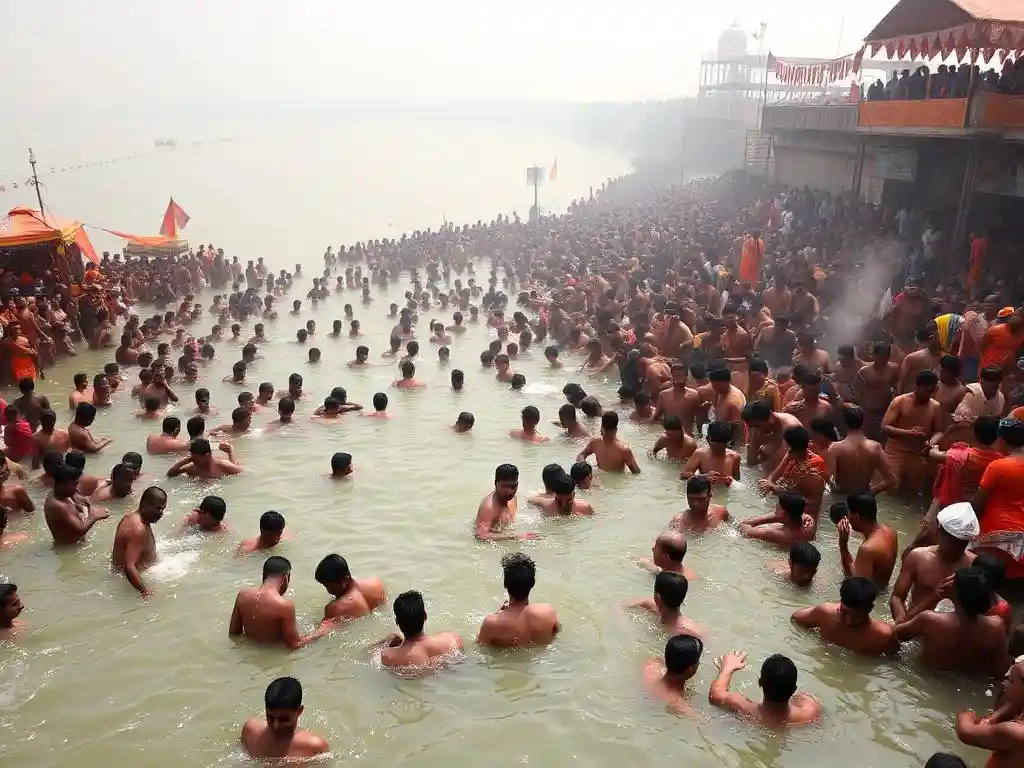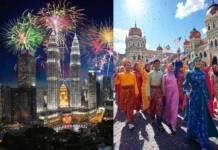
The Kumbh Mela at Sangam is a celebration of spirituality, culture, and unity that attracts millions of devotees to the confluence of the Ganga, Yamuna, and the mythical Saraswati rivers in Prayagraj (formerly Allahabad).
This event is not only a massive religious gathering but also a powerful manifestation of the deep-rooted Hindu traditions that have been observed for centuries.
In this article, we will dive into the significance of the Kumbh Mela, particularly at Sangam, its historical and spiritual relevance, and the unique cultural experiences it offers to the world.
What is the Kumbh Mela?
The Kumbh Mela is one of the largest and most spiritually significant Hindu festivals, held once every 12 years at four sacred locations across India.
These locations—Prayagraj (Sangam), Haridwar, Nasik, and Ujjain—are believed to be the sites where drops of the divine nectar (amrit) fell during the churning of the ocean (Samudra Manthan).
While the event occurs at all four sites, the Kumbh Mela at Sangam in Prayagraj is the most significant, drawing millions of pilgrims from around the world.
The Sacred Confluence at Sangam
The Sangam refers to the confluence of three rivers: the Ganga, Yamuna, and the mythical Saraswati.
This sacred meeting point is believed to possess divine powers, with the waters considered purifying.
Pilgrims believe that taking a dip in the Sangam during the Kumbh Mela washes away sins and brings them closer to achieving moksha (liberation from the cycle of rebirth).
The Spiritual Importance of the Kumbh Mela at Sangam
The Ganga, Yamuna, and Saraswati Rivers
- The Ganga: The most revered river in Hinduism, believed to purify the soul and cleanse all sins.
- The Yamuna: Associated with Lord Krishna, offering blessings of protection and peace.
- The Saraswati: A mythical river believed to bestow wisdom, knowledge, and spiritual enlightenment.
Together, these rivers form a powerful spiritual nexus, and a visit to Sangam is considered a once-in-a-lifetime opportunity for purification and divine blessings.
The Sacred Bath: A Ritual of Purification
During the Kumbh Mela, millions of pilgrims come to take part in the holy dip in the Sangam’s waters. This act symbolizes the cleansing of one’s body and soul, marking a fresh start on the spiritual path.
It is said that the waters of Sangam not only purify the body but also help devotees attain liberation from past karma.
The Kumbh Mela at Prayagraj: A World-Renowned Event
Maha Kumbh Mela: The Grandest of All
The Maha Kumbh Mela is the most prominent and grandest event of the Kumbh Mela, held once every 12 years at Prayagraj. This event attracts the highest number of pilgrims, with the city transforming into a vibrant spiritual hub.
It spans several weeks, during which various religious rituals, processions, and cultural events take place. Pilgrims from all over the world gather here to immerse themselves in the sacred waters of Sangam and partake in the divine festivities.
The Role of Akharas and Naga Sadhus
At the Kumbh Mela, one of the key highlights is the Akharas—monastic groups of ascetics and sadhus who dedicate their lives to spiritual practices.
The most prominent of these ascetics are the Naga Sadhus, who are known for their extreme renunciation. These revered figures lead grand processions and are among the first to bathe in the Sangam, signifying the beginning of the Mela.
A Global Spiritual Gathering
The Kumbh Mela at Sangam is not just an Indian phenomenon. It has become a global event, attracting spiritual seekers and tourists from around the world who come to witness the spectacle and immerse themselves in the rich cultural and religious practices of India.
Cultural and Social Aspects of the Kumbh Mela
Unity Through Faith
The Kumbh Mela represents a beautiful blend of faith, tradition, and unity. Regardless of caste, class, or background, people come together at the Sangam to celebrate their devotion.
This powerful sense of community and shared purpose makes the Kumbh Mela a unique cultural event in the world.
Economic and Tourism Impact
The Kumbh Mela is a boon for the local economy of Prayagraj. The influx of millions of pilgrims creates a demand for accommodations, food, and religious merchandise.
Additionally, the event draws international tourists who come to witness the grandeur of the festival and participate in its cultural experiences.
As such, the Kumbh Mela significantly boosts the local tourism and hospitality sectors.
Raising Awareness for Social Causes
Apart from being a religious festival, the Kumbh Mela is also a platform for spreading awareness about social issues such as sanitation, health, and environmental conservation.
Numerous organizations take advantage of the gathering to educate the masses on important societal matters, reaching millions in a single event.
Embrace the Spiritual Journey at Sangam
The Kumbh Mela at Sangam is much more than a religious gathering; it is a spiritual journey that transcends boundaries. Whether you are a devout pilgrim seeking spiritual solace or a curious traveler wanting to witness a unique cultural event, the Kumbh Mela offers something extraordinary.
The sacred waters of Sangam, along with the grandeur of the festivities, create a once-in-a-lifetime experience that is not to be missed.
We’d love to hear your thoughts on the Kumbh Mela at Sangam! Have you ever attended or are you planning to? Share your experiences or ask questions in the comments below.




























